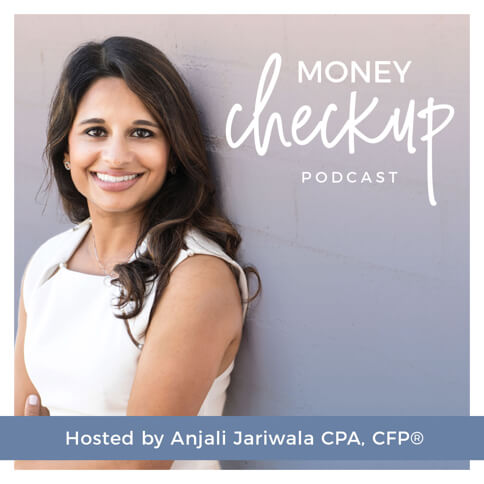Being a small business owner offers a lot of freedom. That includes the freedom to decide how you want to save for retirement.
If your business is young or you are its only employee, an IRA or 401(k) option can help you invest some of your profits for the future. As your business grows, you can explore profit-sharing options or defined benefit plans and potentially reap additional tax benefits. Offering retirement options may even help you attract and retain employees.
Talk with your financial advisor about whether any of these options are a good fit for your company and your family.
SEP IRA
SEP IRA stands for Simplified Employee Pension IRA. This is a straightforward retirement account with the same basic elements as most IRAs: Contributions are tax-deductible, and distributions you take from the plan in retirement are picked up as income on your taxes. There is no Roth version of a SEP IRA, so you cannot choose to contribute post-tax dollars which grow tax-free and come out tax-free in retirement.
SEP IRAs only accept employer contributions; individuals cannot make their own contributions from their paystub or bank account. And like most retirement plans, they come with limits: You can only contribute 25% of your compensation or $56,000 (2019 limit), whichever is less. If you are self-employed, you can deduct 25% of your net self-employment income.
If you are your business’s sole employee, contributing to a SEP IRA is pretty straightforward. But if you choose to hire employees, you will be required to contribute the same percentage to their SEP IRA account as well. Business owners who have SEP IRAs must contribute to them for all eligible employees — those who have worked for the company in three of the last five years provided they earned more than $600 last year and are over 21.
Tax regulations require small business owners to make equal contributions to all SEP IRA accounts for their employees, including themselves. That means if a business owner contributes 20% of her compensation to this retirement plan, she must contribute 20% of compensation for all eligible employees. However, the contributions are discretionary meaning she can choose whether or not to fund the SEP IRA each year depending on the business’s performance.
Employees have to set up their own IRAs to receive their employer’s contributions, which means the administrative requirements for business owners are limited. SEP IRAs do not require the same nondiscrimination testing or filing of Form 5500 that qualified plans do. And employers who offer SEP IRAs have no responsibility for helping their employees invest these contributions.
SIMPLE IRA
The SIMPLE in SIMPLE IRA is an acronym for “savings incentive match for employees.” In these plans, both employer and employee contribute to retirement accounts, as they might do with a traditional 401(k).
Employers who offer SIMPLE IRAs are required to match whatever contributions employees make to their plans, up to 3% of their salary. Employers can also choose to make a 2% non-elective contribution for all employees, whether or not those employees choose to participate.
Like traditional IRAs, SIMPLE IRA contributions are made pre-tax, and distributions are taxed as income. If you withdraw money from the account before age 59 ½, it incurs a 10% penalty.
For 2019, employee contributions to SIMPLE IRAs are capped at $13,000. If employees have access to other types of retirement plans, like a 401(k), their total contributions to all their plans are capped at $18,000.
Non-discrimination testing is not required for SIMPLE IRAs.
Solo 401(k)
Solo 401(k)s are available to businesses that have only one employee, typically the owner. The IRS does not allow a business owner to contribute to a Solo 401(k) if she has employees, but these accounts can cover spouses.
You can contribute up to $56,000 per year to a Solo 401(k), plus an additional $6,000 in catch-up contributions if you are 50 or older. But within that number, there are some additional limits:
- You can contribute up to $19,000 or 100% of your compensation, whichever is less when you are paid as an employee. This includes a paycheck you receive from your business or any compensation you receive at a day job while running your business. This is also where the $6,000 catch-up contribution applies. If you have a W-2 job in addition to 1099 or business income, the $19,000 is capped across all plans.
- You can make a profit-sharing contribution of up to 25% of your profit. If you are an S Corp, profit is based on the salary you take.
The total of those two types of contribution cannot exceed $56,000.
In a traditional Solo 401(k), contributions are made pre-tax and distributions are later taxed as income. But there is also a Roth option, in which contributions are made after tax and distributions arrive tax-free.
Non-discrimination testing is not required for Solo 401(k)s.
401(k) profit share plan
Profit sharing plans are set up with companies that have one or more employees and requires testing. Plans can be set up in various ways depending on the end goal of the owner/employer. Plans may be set up as a safe harbor plan which requires a match or a non-elective contribution.
The reason why a safe harbor plan may be a good option is that it automatically passes nondiscrimination testing which the IRS looks at to ensure owners or highly compensated employees are not maxing out their 401(k)s while the rest of the employees are behind in their savings. These contributions are usually in addition to the profit share which can be discretionary.
With a 401(k) profit share plan, employees can contribute up to $19,000 per year plus $6,000 catch up if 50 or older. This contribution usually comes out of the employees’ paycheck and is in addition to a match, nonelective and profit share contribution that the employer makes.
401(k) profit-sharing plans are typically set up for businesses that have multiple employees, in part because they are more challenging to administer. They require testing each year, filing of Form 5500 and ongoing administration of the plan.
Like most 401(k) plans, contributions are capped for 2019 at $56,000. Employees can defer a maximum of $19,000 plus another $6,000 if they are 50 or older.
Defined-benefit plan
Defined-benefit plans are one of the more complex retirement plan options for small business owners. In these employer-sponsored plans, benefits are determined based on an internal formula that considers things like employee tenure and salary. The employer is responsible for managing the company’s investment portfolio. Although pension plans are becoming less and less common, they are still the best-known example of a defined-benefit plan.
Defined-benefit plans allow business owners to put away much more than the normal 401(k) limit amount. Younger owners could save $80,000 per year or more. For older owners, that could be $150,000 per year or more. And for business owners in high-tax states, they can offer significant tax advantages to employers and to employees.
Defined-benefit plans require testing and are often tested along with 401(k) profit share plans. Employers are required to fund them every year, so if your business doesn’t have consistent cash flow, this may not be the best option for you. Additionally, the payouts of defined-benefit plans do not necessarily depend on investment returns. If portfolios perform poorly, employers are required to make up the difference for all current and former employees.
Defined-benefit plans can offer significant savings for high-income business owners with consistent cash flow. But for those whose income is less predictable, or if you cannot put away the maximum allowed amount, another option might be a better fit.
Consult with a CPA and a third-party administrator about which type of plan is best suited to your company’s needs, both now and as your business grows.
If you like this blog, here’s one I know you’ll really enjoy on Tax and Retirement Planning for Independent Contractors.




